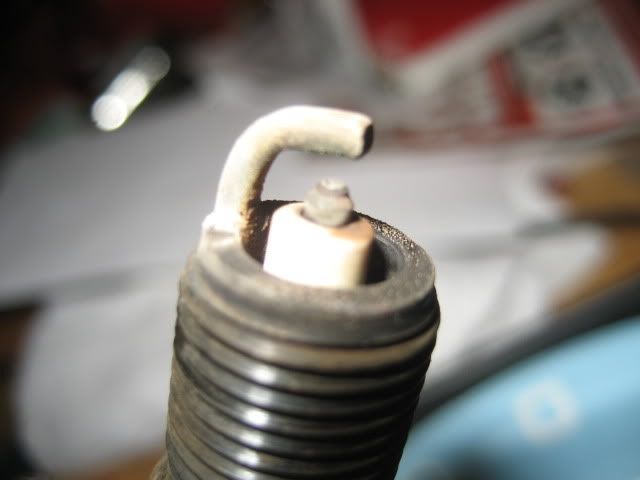Afternoon fellas...
Well bit late with the update for this weeks' blog but as Im now on half term for two weeks

i didnt see the point in rushing

However, there's a lot to cover. so let's start at the beginning

SPARK PLUG WEAR:
Image of a spark plug with normal wear... brown or grey colouration at firing end:

Image of a spark plug with white ''crusty'' deposits at firing end.... plugs have overheated probably due to use of plug with incorrect heat range:

Image of spark plug with carbon fouling due to over rich fuel mixture...
any idea why the mixture could get over-rich???
Image of spark plug with oil fouling.... due to worn bores and/or piston rings or worn valve guides. this also can occur temporarily during the running in period:

Image of spark plug with blistered white deposits (difficult to differentiate between this and the crusty one in my opinion) ...... caused by worn valve guides, excessive use of upper cylinder lubricant, or idling for long periods.

Finally on spark plugs....
a SP that is worn through age/use will have an increasingly larger gap. the effect this will have...
weak spark could equal loss of power. also late spark could occur throwing the timing out. or finally it could cause no spark if it uses the cylinder head as the ''earth'' instead of the electrode due to the gap being too big.
DIESEL ENGINES AND FUEL SYSTEMS.....
This one i was particularly looking forward to as i knew nowt about diesels but they're suprisingly similar...
if we look at the four stroke cycle it's pretty much identical to that of the ''spark ignition'' (petrol) engine except the spark is replaced with fuelinjection....
induction:
only air pulled in... no fiel at this point.
compression:
the air is compressedd but to a much higher rate than a petrol engine... its usual that diesel engines have roughly double the compressin ratio to that of a petrol engine. at 10o before TDC (where the spark would occur in a petrol engine) the fuel is injected. due to the higher compression ratio the air is compressed and heated PAST the flashpoint of the diesel fuel. therefore when the fuel is injected it ignites.....
power:
diesel having self ignition temperature of around 400oC the diesel burns increasing the pressure in the cylinder and forcing the piston downwards.
Exhaust:
burned waste gas forced out of the cylinder as normal. it is also common for a diesel exhaust system to have a filter to reduce the carbon/soot build up.
......SHITE..... got to nip out - will continue update later today... there is lots!





 Author
Topic: Mechanic School Blog (Read 95908 times)
Author
Topic: Mechanic School Blog (Read 95908 times)

